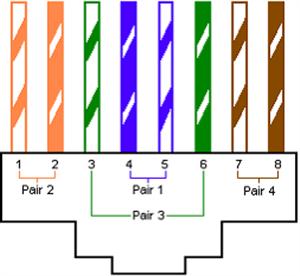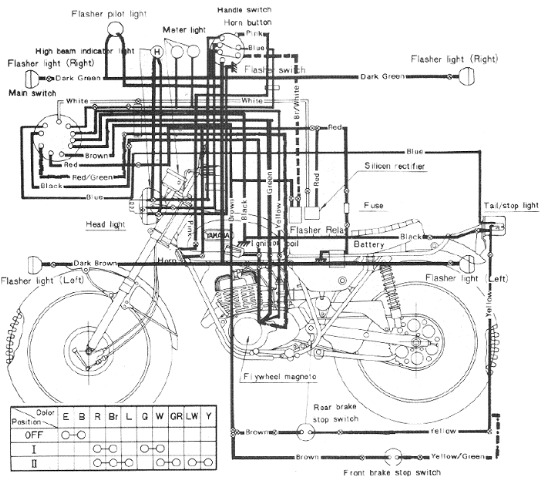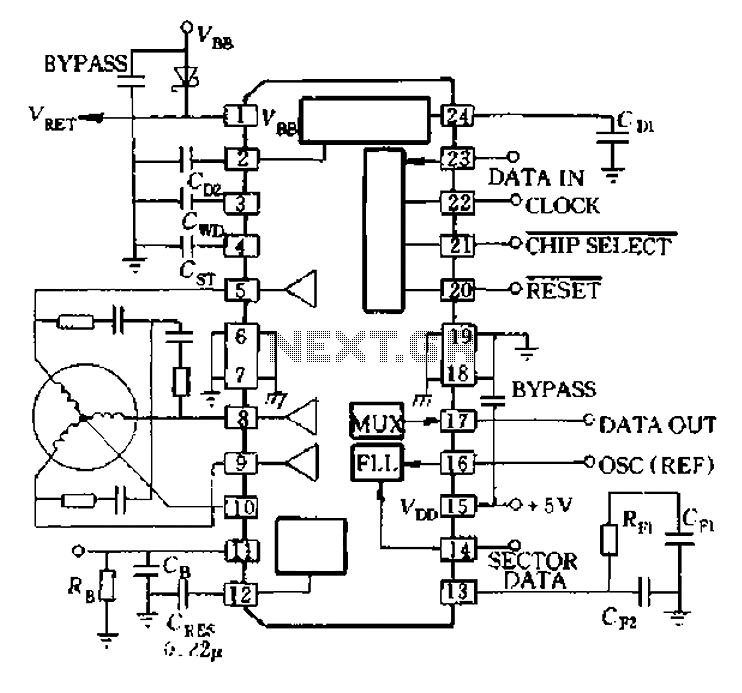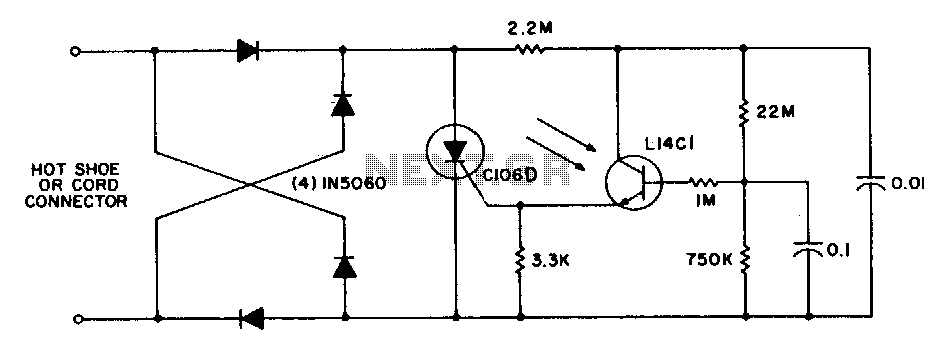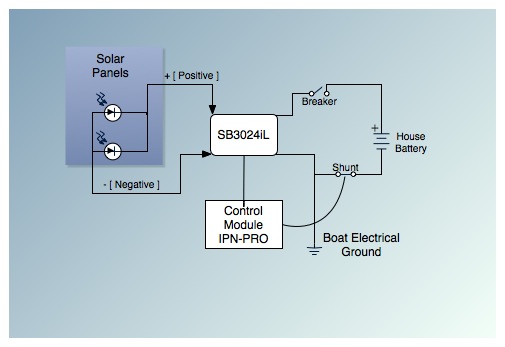
E46 (BMW 3 series) Bi Xenon Wiring
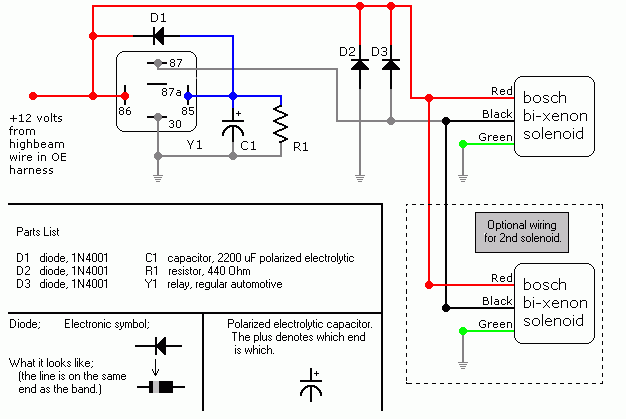
Many individuals with E46 bi-xenon projectors seek guidance on the proper wiring to prevent solenoid burnout while utilizing only two of the three available wires. Different E46 models feature various wire colors. For instance, one set may have a brown wire as a weak ground, a purple wire with a black stripe as a strong ground, and a purple wire as positive. Another configuration includes pink wires. The diagram indicates that green represents a weak ground, black signifies a strong ground, and red is positive. It is essential to identify which wires correspond to the strong and weak grounds, as the strong ground draws 2 amps while the weak ground also draws 2 amps. This schematic's purpose is to momentarily engage the strong ground to open the shield and then release it, allowing the weak ground to take over. This approach enables the shield to open rapidly without drawing excessive current, which could potentially damage the solenoid. The numbers in the diagram correspond to the relay prongs. It is possible to use any automotive 4 or 5-prong relay; however, if a 5-prong relay is used, pin 87a should be ignored. A Bosch 30A relay from Parts Express is recommended due to its robust construction, although any relay should work adequately. A 100V, 1000uF capacitor is also utilized, with a noted delay of over 30 seconds before being able to switch back to high beams after a flash. It is noteworthy that the plastic top of the ballasts can be removed to reduce size, although this requires careful sealing against air and moisture around the plug. This modification is beneficial for smaller engine bays, while others may prefer to retain the original design to avoid moisture and ventilation issues.
The schematic for wiring E46 bi-xenon projectors is designed to facilitate the correct operation of the solenoid mechanism while minimizing the risk of damage due to high current draw. The wiring setup involves a relay system where the strong ground is activated momentarily to allow the solenoid to engage quickly. This is critical to ensure that the solenoid operates efficiently without overheating or burning out. The relay acts as a switch that can control the flow of current to the solenoid based on the input from the vehicle's lighting system.
The relay's prongs are designated in a specific manner, with the common pin typically connected to the power source and the normally open (NO) pin connected to the solenoid. The weak ground is connected to the relay's ground pin, which allows for a safe transition of power. The capacitor mentioned is used to smooth out the voltage fluctuations and provide a buffer that allows for the solenoid to operate smoothly. This capacitor's value has been chosen based on the specific requirements of the solenoid's operation, ensuring that it can handle the necessary current without causing delays or disruptions in functionality.
When modifying the ballast, it is crucial to ensure that proper sealing techniques are employed to prevent moisture ingress, which could lead to electrical failures. The removal of the plastic top should be approached with caution, and it is advisable to use heat-shrink tubing or silicone sealants around the plug connections to maintain a waterproof barrier. The overall design of this wiring schematic allows for a reliable and efficient operation of the E46 bi-xenon projectors, catering to the specific needs of different E46 models while providing flexibility in terms of relay choice and component configuration.Since a lot of people have e46 bi xenon projectors and wanna know how to wire them up correctly, without burning out the solenoid only using 2 of the 3 wires. Different e46 have different colors. I have 3 e46`s and one set has brown as a weak ground, purple with black as a strong ground, and purple as positive.
the other one I have has pink wires. the diagram refers to green as weak ground, black as a strong ground and red as positive. if you have different colors you should make sure you know which is your strong ground and weak ground as the strong one pulls 2 amps and the weak one pulls. 2 amps. The purpose of this schematic is to open the shield with the strong ground momentarily then release the strong ground and let the weak one take over.
it allows the shield to open quickly without pulling a strong current which leads to damaging the solenoid. The numbers in the diagram refer to the prongs of a relay. I forgot to mention that. You can use any automotive 4 or 5 prong relay. if you use a 5 prong relay ignore pin 87a. I would recommend bosch 30A relay from partsexpress: Because of their solid build but any relay should suffice I used a 100v 1000uF capacitor, and it takes 30 seconds + for me to be able to flash again.
i. e. flash or turn it on once and return it to low beams and I can`t return to high beams at all for 30 seconds. Did you all know you could take the plastic top off the ballasts I sure didn`t until recently. it makes them alot smaller, but you have to deal with air/moisture sealing around the plug. I did it because my engine bay is so small, but others might like not having to worry about moisture/venting problems if they have the room.
ok, added good info on the cap value, so I`m gonna put in a shameless OT plug for my new retro since the people I respect for doing such good work on these schematics are listening any advice/opinions appreciated! 🔗 External reference
The schematic for wiring E46 bi-xenon projectors is designed to facilitate the correct operation of the solenoid mechanism while minimizing the risk of damage due to high current draw. The wiring setup involves a relay system where the strong ground is activated momentarily to allow the solenoid to engage quickly. This is critical to ensure that the solenoid operates efficiently without overheating or burning out. The relay acts as a switch that can control the flow of current to the solenoid based on the input from the vehicle's lighting system.
The relay's prongs are designated in a specific manner, with the common pin typically connected to the power source and the normally open (NO) pin connected to the solenoid. The weak ground is connected to the relay's ground pin, which allows for a safe transition of power. The capacitor mentioned is used to smooth out the voltage fluctuations and provide a buffer that allows for the solenoid to operate smoothly. This capacitor's value has been chosen based on the specific requirements of the solenoid's operation, ensuring that it can handle the necessary current without causing delays or disruptions in functionality.
When modifying the ballast, it is crucial to ensure that proper sealing techniques are employed to prevent moisture ingress, which could lead to electrical failures. The removal of the plastic top should be approached with caution, and it is advisable to use heat-shrink tubing or silicone sealants around the plug connections to maintain a waterproof barrier. The overall design of this wiring schematic allows for a reliable and efficient operation of the E46 bi-xenon projectors, catering to the specific needs of different E46 models while providing flexibility in terms of relay choice and component configuration.Since a lot of people have e46 bi xenon projectors and wanna know how to wire them up correctly, without burning out the solenoid only using 2 of the 3 wires. Different e46 have different colors. I have 3 e46`s and one set has brown as a weak ground, purple with black as a strong ground, and purple as positive.
the other one I have has pink wires. the diagram refers to green as weak ground, black as a strong ground and red as positive. if you have different colors you should make sure you know which is your strong ground and weak ground as the strong one pulls 2 amps and the weak one pulls. 2 amps. The purpose of this schematic is to open the shield with the strong ground momentarily then release the strong ground and let the weak one take over.
it allows the shield to open quickly without pulling a strong current which leads to damaging the solenoid. The numbers in the diagram refer to the prongs of a relay. I forgot to mention that. You can use any automotive 4 or 5 prong relay. if you use a 5 prong relay ignore pin 87a. I would recommend bosch 30A relay from partsexpress: Because of their solid build but any relay should suffice I used a 100v 1000uF capacitor, and it takes 30 seconds + for me to be able to flash again.
i. e. flash or turn it on once and return it to low beams and I can`t return to high beams at all for 30 seconds. Did you all know you could take the plastic top off the ballasts I sure didn`t until recently. it makes them alot smaller, but you have to deal with air/moisture sealing around the plug. I did it because my engine bay is so small, but others might like not having to worry about moisture/venting problems if they have the room.
ok, added good info on the cap value, so I`m gonna put in a shameless OT plug for my new retro since the people I respect for doing such good work on these schematics are listening any advice/opinions appreciated! 🔗 External reference
